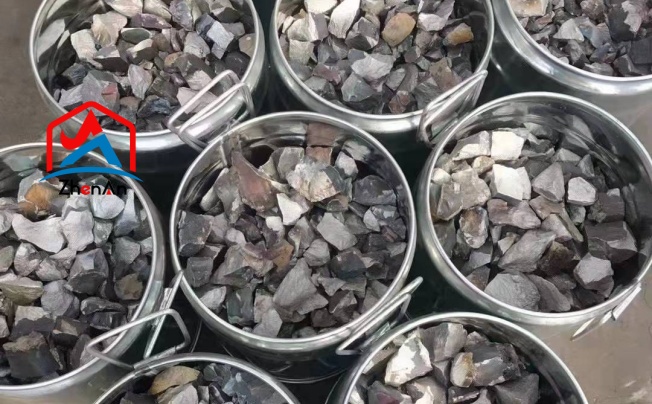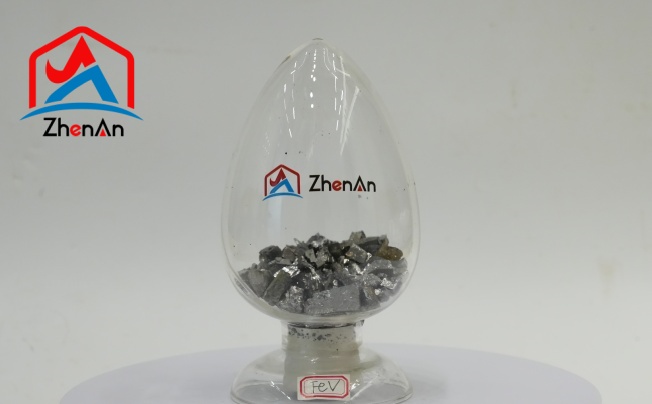What is Silicon Metal?
The metallic form of the chemical element silicon is referred to as silicon metal. Because of its special qualities, silicon is a non-metallic element that is widely used in many different sectors. It is a crystalline solid that is brittle and rigid, with a metallic sheen that is bluish-grey. The primary applications for metallic silicon are as a raw material for silicone, alloys, and electronic components.
It is made by heating silicon dioxide (SiO2) and carbon in an electric arc furnace to produce a high-purity silicon metal that may be further treated for certain uses. This process is known as carbothermal reduction.
In China, metallic silicon is typically categorised into several classes, such as 553, 441, 421, 3303, 2202, 1101, and so on, according to the amounts of calcium, iron, and aluminium in each.
What is Silicon Used For?
Numerous businesses employ silicon metal with high purity. It is used in the chemical industry to make silicon compounds and silicon wafers, which are used in electronic semiconductors and photovoltaic solar cells. Additionally, it is used by aluminium makers to enhance the metal’s existing beneficial qualities. Silicon enhances the castability, hardness, and strength of aluminium.
Silicones: Silicon metal is a crucial component in the creation of silicones, adaptable polymers that find usage in a variety of products, including medical devices, adhesives, lubricants, and sealants.
Alloys: To increase an alloy’s hardness, strength, and heat resistance, silicon metal is added. For instance, it is frequently employed in the manufacturing of aluminium alloys for the aerospace and automotive sectors.
Electronics: The production of electronic gadgets requires silicon metal as a critical component. Semiconductors, which are the fundamental components of contemporary electronics, are made using it.
Solar Cells: Sunlight is converted into electricity through the use of silicon metal in solar cell production. Because of its semiconducting qualities, it is an essential component of the solar industry.
Chemical Industry: Silicon metal is employed as a catalyst and reducing agent in a variety of chemical reactions in the chemical industry.
Market Trend and Demand for Silicon Metal
The rising demand for aluminium-silicon alloys is predicted to drive up demand for silicon metal. The automotive industry uses these alloys extensively in the production of cylinder heads, engine blocks, and other parts. The demand for silicon metal is anticipated to rise in response to the expansion of the automotive sector, particularly in emerging nations.
The solar energy sector is also one of the major users of silicon metal. Solar and photovoltaic cell production is rising in tandem with the growing demand for alternative energy sources. Silicon metal is a crucial component in the solar energy industry since it is used to make solar panels.
The need for silicon metal is also influenced by the electronics sector. The main component utilized in the creation of semiconductors, the fundamental components of electronic devices, is silicon. The need for silicon metal is predicted to be significant due to the ongoing advancements in technology and the rising demand for electrical products.
It is important to remember that several factors, including governmental policies, technological developments, economic situations, and environmental restrictions, can affect market trends and the demand for silicon metal. For instance, since silicon metal is used to make silicones and sealants, the state of the economy may affect the demand for it in the building sector.
In summary, the market trend for silicon metal is anticipated to be favourable due to the growing need for aluminium-silicon alloys, the expansion of the solar energy sector, and the ongoing advancement of the electronics industry.
What is the Difference Between Silicon Metal and Silicon Metal Powder?
Although both metallic silicon and metallic silicon powder are forms of elemental silicon, they differ in terms of their physical makeup and particle size.
Silicon Dioxide The term “silicon metal” describes the pure form of solid metallic silicon, which is usually created in an electric arc furnace by reducing silicon dioxide (silica) with carbon. Many different sectors, such as the manufacture of alloys, semiconductors, and solar cells, frequently use metallic silicon as a raw material.
The term “metallic silicon powder” describes finely ground metallic silicon particles that are created through the grinding of solid silicon metal into a powder. Metallic silicon powder can have a wide range of particle sizes; however, it usually has significantly smaller particles than ordinary metallic silicon. Applications requiring precise particle size, such as the creation of specific ceramics, coatings, and compounds, frequently use silicon metal powders.
In summary, the physical shape and particle size are the primary distinctions between metallic silicon and metallic silicon powder. Metallic silicon powder is made up of finely ground metallic silicon particles, whereas metallic silicon is the solid metallic form of elemental silicon.







